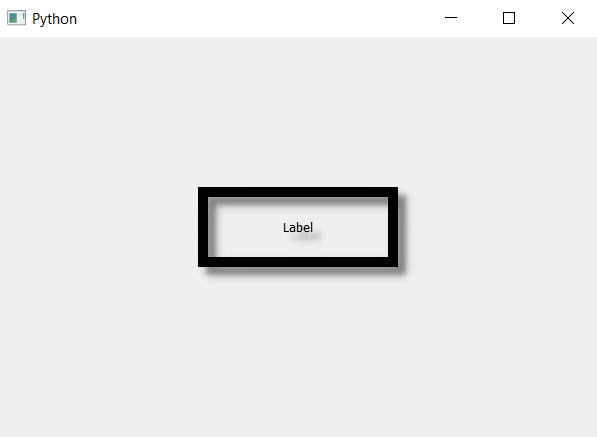PyQt5标签 – 添加阴影
在这篇文章中,我们将看到如何为标签添加阴影,虽然我们可以为标签创建阴影,但默认情况下,标签是没有阴影的,下面是带阴影框的标签的样子

为了做到这一点,我们必须做到以下几点
1.创建一个标签
2.为标签设置几何图形
3.创建一个QGraphicsDropShadowEffect对象
4.为该对象设置模糊半径(可选)
5.在setGraphicsEffect方法的帮助下,将该对象添加到标签中。
语法:
# creating a QGraphicsDropShadowEffect object
shadow = QGraphicsDropShadowEffect()
# setting blur radius (optional step)
shadow.setBlurRadius(15)
# adding shadow to the label
label.setGraphicsEffect(shadow)
以下是实施情况
# importing libraries
from PyQt5.QtWidgets import *
from PyQt5 import QtCore, QtGui
from PyQt5.QtGui import *
from PyQt5.QtCore import *
import sys
class Window(QMainWindow):
def __init__(self):
super().__init__()
# setting background color of window
# self.setStyleSheet("background-color : black;")
# setting title
self.setWindowTitle("Python ")
# setting geometry
self.setGeometry(100, 100, 600, 400)
# calling method
self.UiComponents()
# showing all the widgets
self.show()
# method for widgets
def UiComponents(self):
# creating label
label = QLabel("Label", self)
# setting alignment
label.setAlignment(Qt.AlignCenter)
# setting geometry to the label
label.setGeometry(200, 150, 200, 80)
# setting border
label.setStyleSheet("border : 10px solid black")
# creating a QGraphicsDropShadowEffect object
shadow = QGraphicsDropShadowEffect()
# setting blur radius
shadow.setBlurRadius(15)
# adding shadow to the label
label.setGraphicsEffect(shadow)
# create pyqt5 app
App = QApplication(sys.argv)
# create the instance of our Window
window = Window()
# start the app
sys.exit(App.exec())
输出 :

 极客教程
极客教程